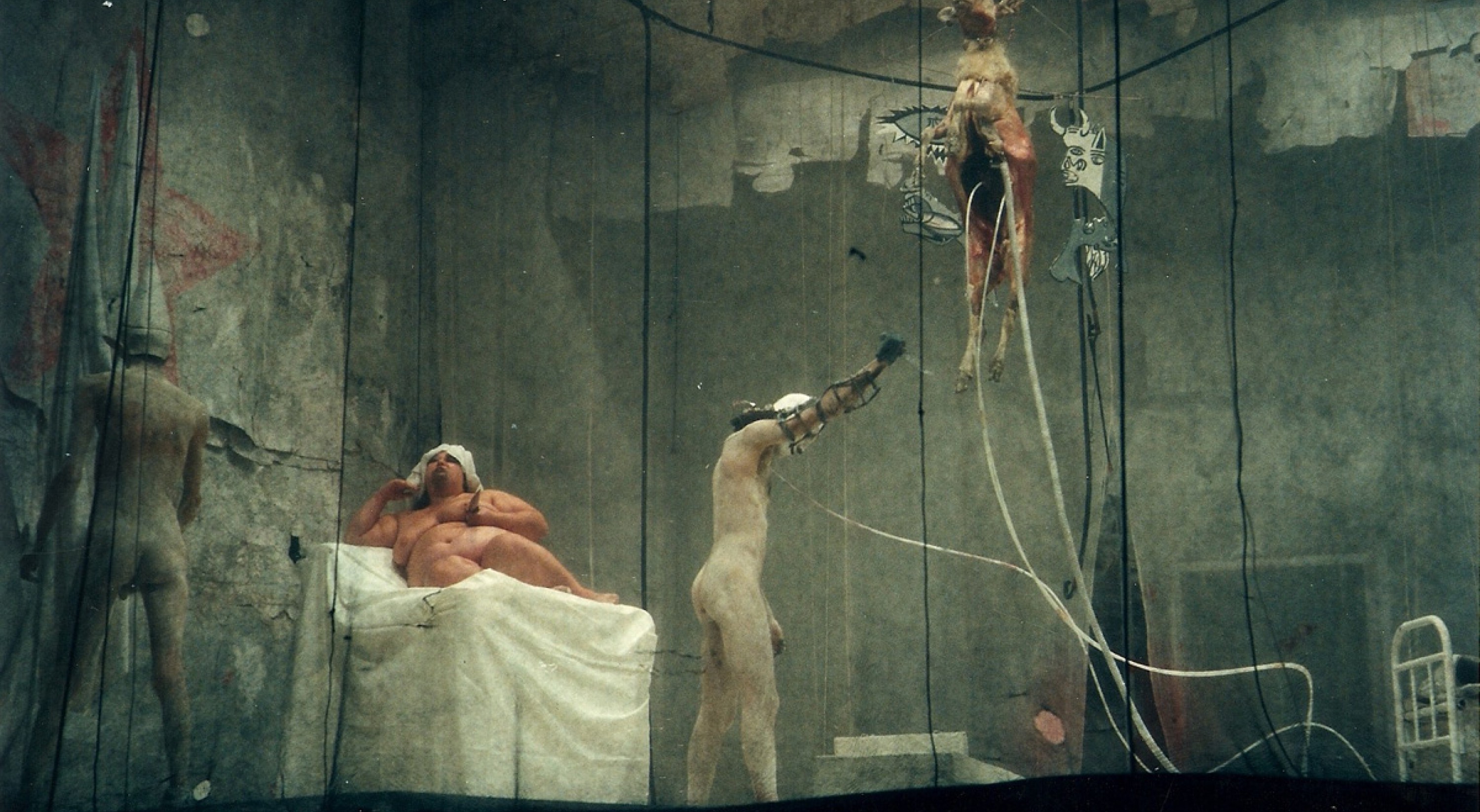Romeo Castellucci
Orestie (une comédie organique ?)
based on the work by Aeschylus
decemberdec 2 – 20
januaryjan 8 – 9
Direction, stage, lighting and costume design, Romeo Castellucci
Music, Scott Gibbons
Assistant lighting design, Marco Giusti
Automation, Giovanna Amoroso, Istvan Zimmermann
Director stage set construction, Massimiliano Scuto, Massimiliano Peyrone
Associate production Socìetas Raffaelo Sanzio // In coproduction with Odéon-Théâtre de l’Europe ; Festival d’Automne à Paris ; MC2 Grenoble ; Célestins – Théâtre de Lyon ; Théâtre Nouvelle Génération – Centre dramatique national de Lyon ; La rose des vents – Scène nationale Lille Métropole à Villeneuve d’Ascq ; Maillon Théâtre de Strasbourg – Scène européenne ; Romaeuropa Festival ; Théâtre National de Toulouse Midi-Pyrénées, With théâtre Garonne – Scène européenne (Toulouse) // In partnership with Odéon-Théâtre de l’Europe ; Festival d’Automne à Paris (for performances from 2 to 20 December) // First performed on 6 April 1995 at Teatro Fabbricone, Prato
En association with France Culture
Exactly twenty years ago, an Italian company, the innocuous name of which, Socìetas Raffaello Sanzio, belied its hard-hitting artistic stance, gained instant international recognition with Orestea (una commedia organica?), an adaptation of the Oresteia. In it, Aeschylus’s trilogy came under the scrutiny of a “philological” reading, translated into images and sounds reaching unprecedented levels of power and profusion. A Down’s syndrome performer played Agamemnon, “because he was a monarch, and did not enter into discussion”; and Clytemnestra was a lady of huge proportions “because she weighed down heavily on the drama”, just like Cassandra. Orestes and Pylades, both painfully thin, wandered around the stage like two upright sticks, two flour-clad figures, symbolic of something we cannot grasp, and constantly chided by an explosive chorus and its rabbit-eared coryphée. Against the darkened sky of a century at war with itself, the onward march of time was put through the mill by the Duchamp-inspired Roue de bicyclette (Bicycle Wheel), any crimes committed were brought to light via a lamp from Picasso’s Guernica, and in a final reference to contemporary painting, the Furies took the form of monkeys drawn straight from a Bacon-like bestiary, alongside various twisted mechanical contraptions and S&M harnesses. This historic version is the one which Romeo Castellucci has decided to re-stage, and constitutes a new departure for the Italian director. In his onward march from one show to the next, the occasion had never really arisen for him to retrace his steps, and ask himself : “How will today’s audiences react to images first shown twenty years ago?”

